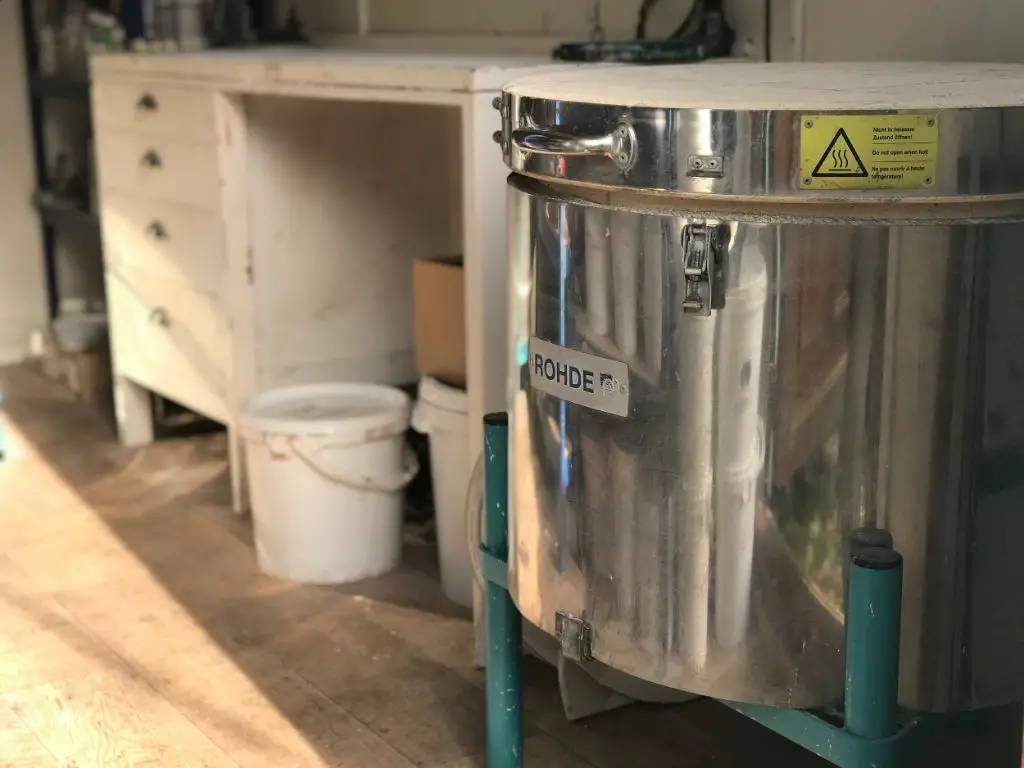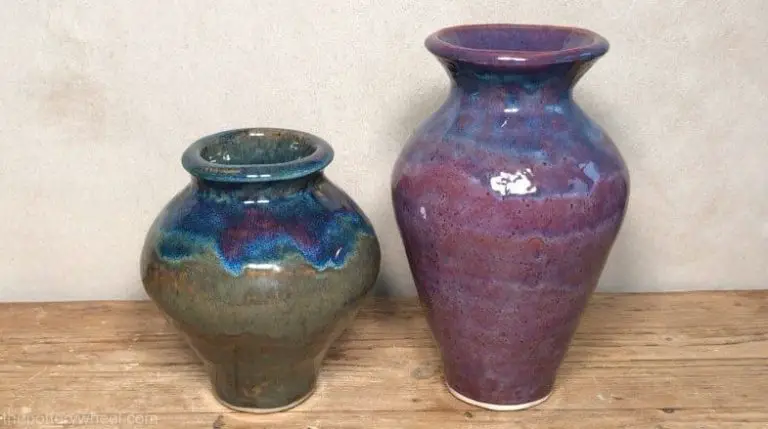How Much Is Glaze Fire?
What is Glaze Firing?
Glaze firing is an essential part of the pottery making process. It is the high temperature firing process that fuses ceramic glazes to bisqueware pottery and other ceramic items (Definition of glaze firing in pottery). Glaze firing bonds the glaze to the clay body, making the piece impervious to water and durable for its intended use.
The purpose of glaze firing is to melt the glaze materials, allowing the silica to flow and fuse with the bisqueware. Typical glaze firing temperatures range from around 1922°F to 2462°F, depending on the glaze type (Purpose of glaze firing). When fired at the proper temperature, the glaze will become smooth, glossy, and translucent.
There are many types of ceramic glazes used in glaze firing, including crystalline, matte, underglaze, overglaze, and specialty glazes. Glazes contain silica, fluxes, and other minerals that interact and melt to form glass at high temperatures. The glaze recipe determines the colors, textures, and visual effects achieved.
Kiln Types for Glaze Firing
There are two main types of kilns used for glaze firing – electric and gas. Each has its own advantages and disadvantages when it comes to capabilities and costs.
Electric Kilns
Electric kilns are the most common choice for home potters and small studios. They can easily reach the temperatures needed for glaze firing, which is usually between 2160-2300°F. Electric kilns heat up using heating elements that surround the interior chamber. They offer precise digital temperature control using a pyrometer. Electric kilns require standard wall outlets, though some may need a dedicated circuit to handle the power load which can be 30 amps or higher.
The main limitation of electric kilns is their size capacity. Most home electric kilns max out at around 5-10 cubic feet. This restricts the size of pieces that can be fired. However, electric kilns are simple to use, energy-efficient, and provide excellent temperature uniformity for glaze results.
Gas Kilns
Gas kilns utilize natural gas or propane for fuel. They can achieve much higher temperatures beyond 2300°F and have greater size capacities upwards of hundreds of cubic feet. The main advantage of gas kilns is their ability to fire at stoneware and high-fire temperatures above 2300°F. This makes them ideal for firing porcelain.
However, gas kilns can be more difficult to operate and control temperatures accurately. The temperature uniformity is also not as precise as electric kilns. Gas kilns require good ventilation and special gas hookups. These factors make gas kilns better suited for large studios and production potteries rather than small home studios.
Factors That Affect Glaze Firing Costs
There are several key factors that impact the cost of glaze firing, including:
Kiln type: Electric kilns tend to be more affordable to operate than gas kilns since electricity is generally cheaper than propane or natural gas. However, gas kilns allow for more control over the firing process. (source)
Kiln size: Larger kilns that can hold more pieces per firing will tend to be more energy efficient in the long run. Firing a large kiln half-full will use almost as much energy as firing it completely full. (source)
Energy source: As mentioned above, electric kilns are typically cheaper to fire than gas kilns. This is because electricity rates are lower than gas in most areas. However, some studios may not have the electrical capacity to support an electric kiln. (source)
Glaze materials: The ingredients and formulations used in glazes impact their firing properties and temperatures needed. Simple, low-fire glazes tend to be less expensive to fire than more complex glazes. (source)
Number of pieces: The more bisque pieces loaded into the kiln, the more cost-efficient the firing will be. Maximizing the kiln by firing it completely full reduces the average energy cost per piece. (source)
Electric Kiln Costs

Electric kilns are typically the most economical option for small home studios and hobbyists. The average electric kiln suitable for firing ceramics costs between $500-$2000 depending on the capacity, maximum temperature, and features [1]. Electricity costs range from 10-20 cents per kilowatt-hour on average, so firing a medium sized electric kiln holding 100 pieces may cost $15-30 in electricity per firing [2].
The main advantage of electric kilns is lower upfront costs and easier operation. However, large-scale studios may find gas cheaper long-term for frequent high-temperature firings. Electric can lack power for fast firings above cone 10. But for most hobbyists and small studios, electric provides an affordable and convenient option.
Gas Kiln Costs
Gas kilns typically cost $2,000-$10,000 depending on the size and features. Gas fired kilns rely on propane or natural gas to generate heat, making fuel costs an ongoing expense.
According to Windmill Potteries, propane gas costs around $2.50-$3.50 per firing for the average gas kiln. So fuel costs may range from a few hundred dollars to over $1,000 per year depending on usage. Natural gas is usually cheaper than propane.
Compared to electric kilns, gas fired kilns heat up faster and can reach higher temperatures. They also provide atmosphere control options not possible with electric. However, gas kilns require ventilation and can be more difficult to operate safely. Maintenance costs may be higher as well.
Glaze Materials Costs
The most common ingredients in ceramic glazes include silica, feldspars, kaolin, dolomite, zinc oxide, and colorants like metal oxides. Glaze materials can be purchased from ceramic suppliers in bulk bags or pre-mixed glazes. Some common sources to buy glaze ingredients and materials include:
– Local ceramic and pottery supply stores – These will have a selection of basic ingredients and pre-mixed glazes, often at slightly higher costs than online.
– Online ceramic suppliers like Sheffield Pottery, Clay Planet, and Big Ceramic Store – Buying 25-50 lb bags provides the most cost savings on materials.
– Manufacturer and distributors like Laguna Clay and Axner – For purchasing large quantities from 100-2000 lbs at further discounted prices.
Glaze ingredients can range from $1-3 per pound when buying small quantities, down to $0.50-1 per pound for bulk bags around 50 lbs. Buying in bulk typically offers 40-60% cost savings compared to small bags. Pre-mixed glazes cost $15-30 for a 5 lb bucket. With proper storage, bulk glaze materials can last 1-2 years for most hobby potters before spoiling.
Estimating Firing Cost Per Piece
Estimating the cost of firing glazed pieces in a kiln requires considering several factors:
- Kiln type (electric or gas)
- Kiln size
- Energy costs
- Labor costs
- Number and size of pieces being fired
- Glaze materials used
There are a few formulas that can help estimate firing costs:
For electric kilns, the basic formula is:
(Kiln wattage x Hours fired x Energy cost) / Number of pieces = Firing cost per piece
For example, if you have a 10 cubic foot electric kiln that draws 5500 watts, fire it for 8 hours at $0.11 per kWh, and load 50 mugs:
(5500 watts x 8 hours x $0.11 per kWh) / 50 mugs = $9.68 per mug
For gas kilns, the formula is:
(Feet cubed of kiln x Hours fired x Gas therm cost) / Number of pieces = Firing cost per piece
So a 10 cubic foot gas kiln firing for 8 hours at $1.25 per therm with 50 mugs would be:
(10 cubic ft x 8 hours x $1.25 per therm) / 50 mugs = $2 per mug
These formulas provide a good baseline estimate, but the costs can vary based on the glaze materials used, any special firing techniques, and local energy rates.
Reducing Glaze Firing Costs
There are several ways to help reduce the costs associated with glaze firing:
Kiln maintenance – Well-maintained kilns tend to be more energy efficient. Simple steps like replacing worn bricks, cleaning thermocouples, and lubricating moving parts can help a kiln run optimally. Doing regular maintenance checks and tune-ups as recommended by the manufacturer can save on energy bills over time. According to one source, “A kiln firing at peak efficiency will use less energy per firing and reduce your operating costs” [1].
Energy efficiency – Using a kiln with good insulation, minimizing heat loss by sealing cracks, and firing full loads can improve energy efficiency. Programmable controllers allow optimizing ramps and holds to use just enough energy needed for the firing. Switching to a more efficient power source like gas or upgrading to a newer electric kiln are bigger investments but can pay off long-term.
Buying in bulk – Purchasing glaze ingredients, kiln shelves, and other supplies in bulk quantities can often result in cost savings compared to buying smaller amounts. Potters who frequently fire may benefit from partnering with others to purchase materials together and share costs. Buying in bulk also reduces packaging and can be more environmentally friendly.
When Paying More Makes Sense
While trying to minimize costs is often the priority, there are some cases where paying more upfront can lead to better results and long-term savings.
Using higher quality materials like commercial glazes or premium clay bodies can produce pieces with superior durability, richness of color, and consistency. The improved quality means fewer losses due to cracking, color defects, or other issues. Replacing ruined pieces can ultimately cost more than using pricier materials in the first place. Paying more for quality materials and firing can be a worthwhile investment if it results in salable work.
Upgrading to a more advanced kiln with precise digital controls also leads to better outcomes. The ability to precisely program temperature changes results in flawless glaze finishes. While the kiln itself costs more, the time saved monitoring firings and lack of lost pieces can offset the higher capital costs over years of use. This is especially true for professional artists or studios firing frequently.
Additionally, commercial glaze mixing services may be worth the higher price. While hand mixing glazes can be cheaper, it takes extensive testing to formulate recipes and achieve consistent results. Paying a premium for expertise can provide access to proven glaze recipes that fire beautifully time after time. For hobbyists or new ceramicists, buying prepared glazes reduces wasted materials from trial and error.
In some situations the higher upfront costs bring clear benefits that make the investment worthwhile. However, for small scale or hobby ceramics the extra costs may not justify the marginal quality improvements.
The Bottom Line
Overall, the average range for glaze firing cost per piece is $1-10. This wide range accounts for factors like kiln type, glaze materials, and firing service costs. For example, firing a small piece in an electric kiln with studio glazes may cost around $1-2. However, a large, intricate piece fired in a gas kiln with specialized glazes could cost $8-10.
There are several ways to reduce glaze firing costs:
- Use an electric kiln rather than gas, which uses less energy (https://www.dogwoodceramics.com/misc/cost-of-firing-ceramics.htm)
- Fire multiple pieces per load to spread out costs
- Opt for simple glazes over specialized ones
- Purchase glaze materials in bulk for discounts
- Share kiln access through a studio membership or class
Paying more for firing may be worthwhile for unique finishes like crystalline glazes fired to cone 10. Overall, costs can be managed through strategic choices in kiln type, glaze materials, and firing approach.



